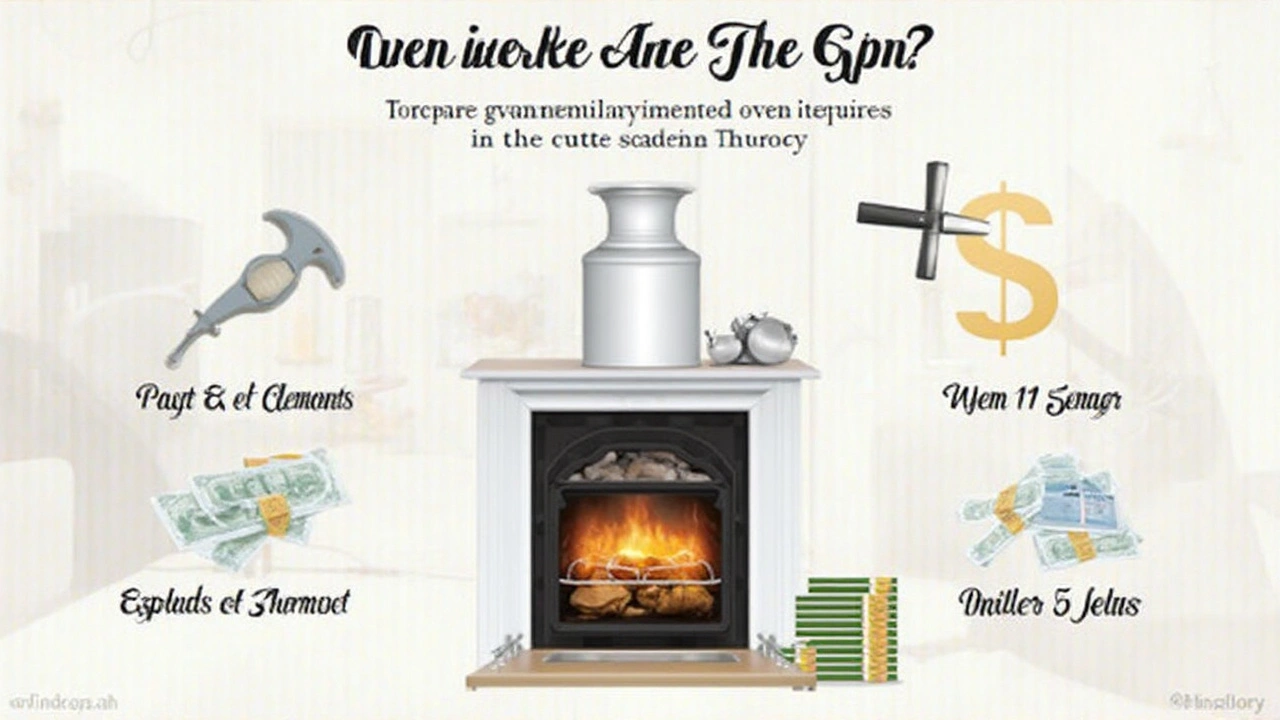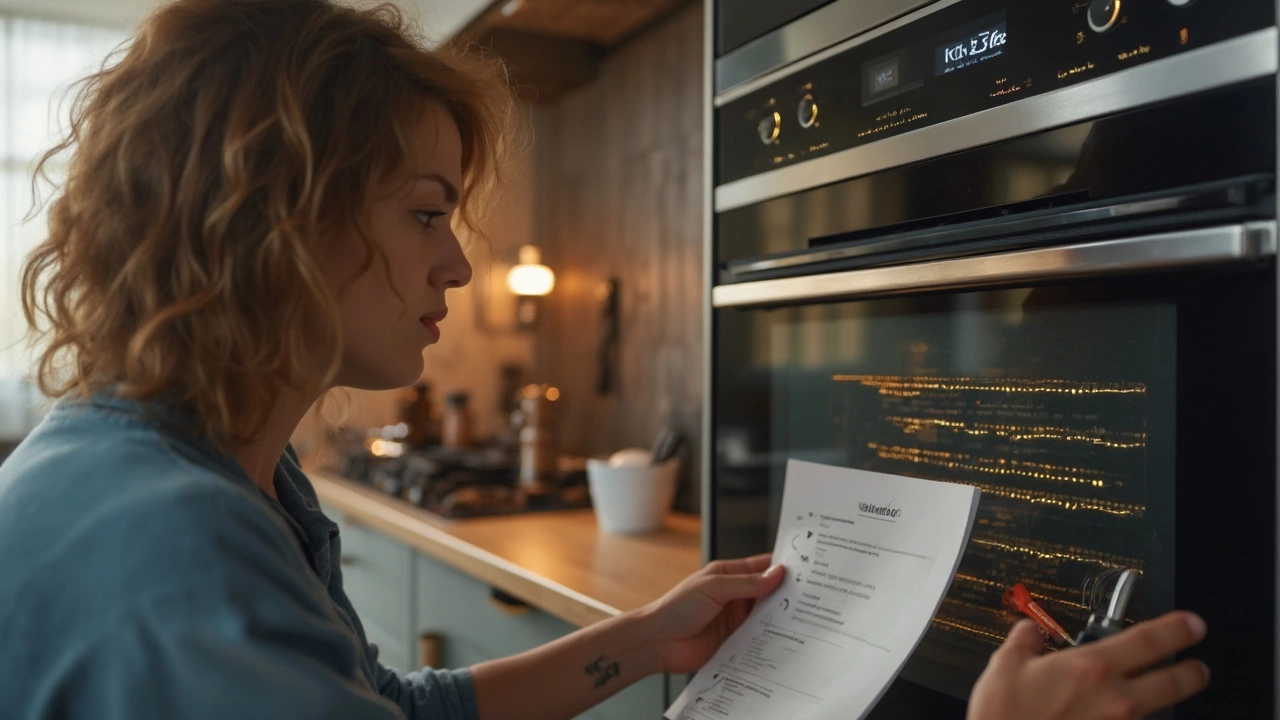So, your trusty oven is giving you the silent treatment and not heating up? That's a total kitchen buzzkill. Before you start dreaming of takeout forever, let's talk about what it might cost to get your oven back in action. It's not as mysterious as it sounds.
The price tag for fixing an oven that won't heat can vary depending on what's causing the problem. Is it the igniter acting up? Or maybe it’s the bake or broil element that's gone rogue? Knowing the culprit can help you gauge potential expenses.
If it's something simple like replacing a faulty heating element, you're looking at around $20 to $50 for parts. But if the issue is more complex, involving a malfunctioning thermostat or control board, costs can creep up to $200 or more, especially if you include labor.
Here's a nugget to chew on: sometimes, a DIY fix can save you a chunk of change. However, if you're not comfortable poking around inside an electrical appliance, calling a pro might be the safer bet. Plus, professionals often have tricks up their sleeves to diagnose problems quickly.
- Common Oven Heating Problems
- Cost Breakdown for Parts and Labor
- DIY Fixes vs. Professional Help
- Warranty and Maintenance Considerations
- Tips for Avoiding Future Repairs
Common Oven Heating Problems
If your oven is just sitting there, stubbornly refusing to heat up, knowing what might be wrong can save you time and frustration. Here are some common issues folks encounter with their electric oven when it decides to take a day off.
1. Faulty Igniter: In gas ovens, the igniter is crucial for lighting the gas to produce heat. If it’s not sparking the flame, your oven won’t heat. Worse, it could lead to gas being released without ignition—yikes! For electric ovens, the igniter or glow bar can wear out over time, preventing heat up.
- A telltale sign? It glows weakly or not at all.
2. Broken Heating Element: In electric ovens, heating elements can crack or break, usually visible as a blister on the element. This is a quick and common culprit to check.
- Look for any visible signs of damage.
3. Malfunctioning Thermostat: A thermostat on the fritz might tell your oven to chill out when it’s supposed to heat up. When this happens, your food stays disappointingly raw.
- Need a clue? Your oven's temperature gauge is off.
4. Defective Temperature Sensor: This part keeps tabs on the oven’s internal temperature. If it’s misreading or faulty, the oven might think it's already heated when it’s really not.
5. Blown Thermal Fuse: This safety device stops your oven from overheating. If it blows, your oven won’t heat at all. It’s like the universe’s way of saying, "Take it easy!"
These problems are pretty common, and a little detective work could save you a call to the repair guy. Still, handling anything electrical can be risky if you're not sure what you’re doing, so sometimes calling in a pro is the way to go. Plus, pros might have insights gained from seeing these issues day in, day out. Sometimes it’s nice to leave it to someone with a practiced eye.
Cost Breakdown for Parts and Labor
Getting your oven back to its warm, cozy self involves a bit of sleuthing around costs, both in parts and labor. Knowing what typically causes issues can help you budget more wisely. Here’s the lowdown on what you might expect.
First off, let's chat about parts. If your electric oven isn’t heating, there are a few usual suspects:
- Heating Element: This is a top culprit if your oven’s just not getting hot. Replacing it can cost anywhere from $20 to $50, depending on your oven's make and model.
- Igniter: For gas ovens, this might be the reason behind a cold oven. Replacing an igniter runs between $40 and $100.
- Thermostat: If the oven's cycling off too soon, this little guy might be to blame. Thermostats can range from $100 to $200.
- Control Board: The brain of the operation! If it's acting up, you’re looking at a heftier price tag of around $200 to $300.
Labor costs can vary based on where you live and who you call. Generally, you can expect to fork out around $100 to $150 for a repair visit. Keep in mind, some places snuggle a diagnostic fee into the bill, which may be credited if you go ahead with the repair.
Here’s a little pricing nugget to ponder: some brands have pricier parts or require specialized knowledge, which can jack up labor costs. So, if you're rocking a high-end stove, you might pay a premium for repairs.
| Part | Cost Range |
|---|---|
| Heating Element | $20 - $50 |
| Igniter | $40 - $100 |
| Thermostat | $100 - $200 |
| Control Board | $200 - $300 |
Being aware of these costs and having a chat with repair technicians can save you from unexpected surprises. Always ask for a quote upfront to keep your wallet happy and your oven warm!

DIY Fixes vs. Professional Help
Staring at your stubborn oven, you might wonder if you can tackle the fix yourself or if it’s time to call in the pros. Here's the lowdown on making that choice.
If you're dealing with something basic like a broken bake element, swapping it out is often a piece of cake. Most electric ovens have a heating element that's plug-and-play, which you can replace with a few simple tools—and a pinch of courage.
But, honestly? A fix isn't always that straightforward. If the problem is with the oven's temperature sensor or a faulty control board, things can get dicey fast. Messing with wiring not only risks personal safety, but it can also void any existing warranty you may have on your electric oven.
So when should you dial up a repair service? If you're not comfy fiddling with wires, have invested in a high-end appliance, or just can't pinpoint the issue, calling a professional makes a lot of sense. They bring expertise and peace of mind, usually sorting stuff out quickly.
Before going for professional oven repair, ask for a quote, as labor costs can vary: from $50 to a couple of hundred bucks depending on the complexity and your location. Some companies might even offer diagnostics at a flat rate, so you won’t get any financial surprises down the line.
Check out this quick comparison:
| Criteria | DIY | Professional Help |
|---|---|---|
| Complexity | Simple fixes like replacing elements | Complex issues such as electrical faults |
| Cost | Low, mostly parts cost | Higher, includes labor cost |
| Time | Varies; can take longer with no experience | Quick, efficient repairs |
Remember, whether you go for a DIY fix or professional help, the end game is to have a functioning oven, without burning a hole in your pocket—figuratively and literally!
Warranty and Maintenance Considerations
Before you whip out your wallet to fix that oven not heating problem, take a minute to think about warranties. A lot of people forget this, but they can be a real lifesaver. Most ovens, especially the newfangled electric ones, come with a warranty that covers repairs for a certain time, usually a year or longer.
It’s worth checking those documents you tossed in a drawer after buying the appliance to see if you’re still covered. If you find you’re within the warranty period, lucky you! Contact the manufacturer or the retailer you bought it from to see how they handle repairs. Just a heads up, doing your own repairs might void the warranty, so tread carefully!
Regular maintenance can be your best friend when it comes to avoiding repeated breakdowns. Simple actions like cleaning the oven and checking for wear and tear can prevent bigger issues down the road. As George Burns, a certified appliance tech, once said,
"A little bit of maintenance goes a long way in extending the life of your appliances and avoiding hefty repair bills."
Here are a few easy maintenance tips:
- Wipe down spills immediately to prevent them from baking onto the surface.
- Check and clean the heating elements regularly—they should glow bright red when working correctly.
- Inspect the door gasket for tears or gaps to keep heat from escaping.
Think of maintenance like flossing your teeth; it's not glamorous, but it keeps things running smoothly. And remember, even if you’re out of warranty, investing a little time in upkeep can save you money on electric oven repair in the long run.

Tips for Avoiding Future Repairs
Nobody wants to be on a first-name basis with their appliance repair guy. So let's talk about how to keep your oven in tip-top shape and avoid those pesky breakdowns.
First off, regular maintenance is key. Think of it like a spa day for your electric oven. Make sure to clean it routinely, especially after any drippy or greasy cooking marathons. A dirty oven not only cooks less efficiently but can also clog up components that keep it from working properly.
Check the door seal. A tight seal keeps heat inside where it belongs, ensuring your food cooks evenly and your oven doesn't have to work overtime. If the seal is cracked or worn, it's time for a replacement.
Another hot tip: take a peek at the heating elements every so often. If they're looking warped or damaged, replace them before they fail completely. And speaking of replacements, always ensure replacement parts are compatible with your model to avoid voiding warranties.
- Keep vents clear: Make sure nothing is blocking the air vents. Proper ventilation is critical for maintaining the efficiency of your oven.
- Calibrate the thermostat: Over time, the temperature settings might drift. Calibrate your oven every few months to ensure it's hitting the right temps.
- Unplug during storms: A power surge can do a number on your oven's electronics, so unplug it during severe weather if possible.
Lastly, consider a yearly check-up by a professional. They can spot issues before they become big problems, saving you the hassle and cost of a major repair.
By following these simple practices, you'll keep your oven humming along happily, baking your favorite cookies and family meals without a hitch.


